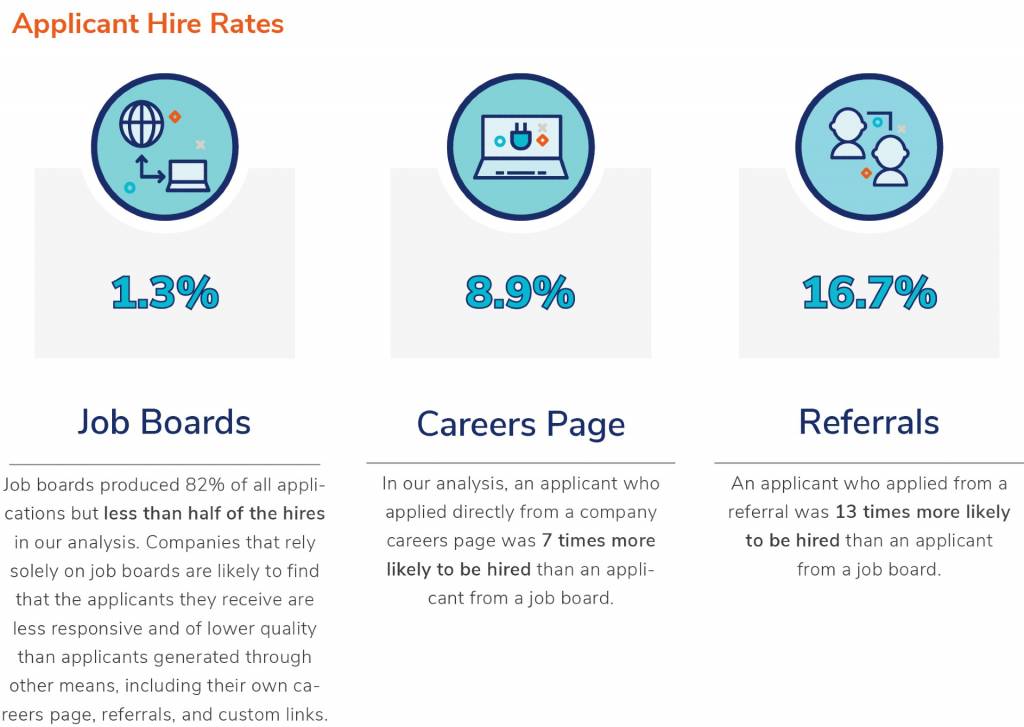An employee referral program is essentially a recruiting device. Companies actively encourage their employees to refer qualified candidates from their professional networks to apply for open positions.
Many companies are quickly embracing this recruiting strategy over traditional career pages and job websites for various reasons. For starters, studies show that new hires coming through the employee referral program are more likely to be hired, easier to onboard, and stay longer with the company.


Not just that, but employees who refer successful candidates also tend to have a lower turnover rate.
An employee referral program is also an efficient hiring process. Candidates coming through this program don’t require rigorous vetting if the referral is coming from a great employee.
Those are just but a few of the benefits of an employee referral program. Now let’s see how to set up such a program for your firm:
1. Create a vision for the future of your team.
Where do you see your team four to five years from now? What goals and objectives do you want to achieve? And what core values and culture will your team require to achieve those goals?
The answers to these questions form the foundation of a successful employee referral program.
They make it easier for you to know what kind of talent your company needs. They also help your employees understand what the company expects. That makes it easier for them to refer the right candidate for the company.
Start by creating the core vision of your team. Inform every team member of the vision. Make sure everyone’s clear as to what’s needed to achieve it.
2. Establish SMART objectives.
Your employee referral program should have Specific, Measurable, Attainable, Relevant, and Time-Based (SMART) objectives. These objectives should guide the implementation of your program. They will also make it easier for you to know whether your program is working or not.
Suppose you set an objective to hire five back-end developers for your IT department by the second quarter. In that case, you have reference metrics to know whether your referral program achieved its goals. That’s because the goal is very specific; you want five back-end developers.
The goal also points out where the developers are stationed. But more importantly, it gives a timeline for when the recruitment should be completed.
Create similar, specific objectives for your program.
3. Figure out what you need.
Once you have your objectives written down, think about the resources you need to achieve these goals. First, do you have enough funds to run the program sustainably?
Successful employee referral programs come with compensation packages for employees who refer successful candidates. Most companies will typically give the employee a bonus. Make sure you have funds for this and other expenses that will be incurred during the process.
What about staff? Do you have enough employees to make the program a success? And it’s not just about the numbers; you also need the right employees.
Let’s say you’re starting an online business and you need back-end developers. Now, imagine you have a decent workforce but only a few IT experts. Finding qualified candidates in such a case can be a bit tricky.
That’s because most of your workforce is outside the network of interest. Therefore, while you may still get some decent leads, your pool will most probably be limited.
Another resource worth considering is time. The good news here is that the employee referral program is a pretty quick hiring process. Nevertheless, you should have a contingency plan just in case the program doesn’t work out within the set timeframe.
4. Create your program.
Once you have the resources in place, go ahead and set the governing rules of your program.
The first crucial guideline is setting the benefits an employee gets if their candidate is hired. A LinkedIn report shows that cash awards are the preferred choice by most employees.
However, you shouldn’t assume that your employees have the same preference. It’s worth passing around a questionnaire or doing a quick interview to find out what benefits your employees are interested in.
Maybe they’ll prefer a donation to a charitable organization. But if they pick the cash bonus route, you’ll have to decide between a percentage (of the position’s salary) or a flat-rate bonus. That decision should be based on the available financial resources.
You can also provide a combination of monetary and non-monetary benefits.
For example, in addition to giving its employees cash rewards, Salesforce provides perks like baseball tickets to drive referrals. Meanwhile, InMobi offers experiences like all-paid trips instead of cash bonuses. The tactic has worked incredibly well for them.
Non-monetary benefits work like a charm, especially if you can personalize the gift to fit what the employee loves.
Decide which employees are allowed to make referrals. For example, you could go with employees who’ve been with the company for a given duration. These employees understand the company culture fully, so they are likely to make solid referrals.
You could also limit it to employees who are above a given seniority level. For instance, it has to be a team leader going up.
You’re also free to use a combination of multiple factors, e.g., make it a team leader or above who’s been with the company for at least four years.
5. Inspire your workers to make referrals.
The success of any employee referral program relies on employees tapping into their networks to send qualified candidates your way. Therefore, you must go out of your way to inspire your workers to embrace the program.
Start promoting the program before it goes live. Send out memos, bulletins, etc., to all internal communication channels. That should build up some hype to help get your workers excited.
When the program is finally ready for launch, create a brief official event. Invite as many workers as possible. Point out the open roles and the perks for each successful referral.
When an employee refers a successful candidate, don’t just send them a check discreetly. Recognize the employee publicly. That will make them feel valued and increase the popularity of your program.
You might introduce a competition element to popularize the program. Create a competition between departments with open positions. The department with the most successful referrals gets an award. Be sure to reiterate the importance of referring qualified candidates and not just any person.
6. Keep your referral program going for a long time.
Screen your employee referral program regularly to make sure it’s still in line with your needs and vision. If there’s an update in your company’s core values or culture, make sure it reflects on the program.
Similarly, if salaries are adjusted, you may have to adjust the referral bonus of your program as well.
You also need to ensure your employees are aware that the program still exists. Point out the perks of the program every time. This is especially important whenever an open position is announced.
Including the employee referral program in the onboarding process makes sure even fresh recruits know about the program.
7. Assess your program.
Evaluate your employee referral program periodically to determine if it’s achieving your SMART objectives.
In addition to the objectives, check how well your organization has embraced the program. You can do this by assessing the participation rate. You can also interview your workers to gather some qualitative data.
Moreover, check whether there is any significant improvement between this and the recruiting strategy you were using previously. Has it really lowered your employee turnover rate? Has it reduced the time to hire?
The assessment should give you a good idea of how well the program is performing and how to improve it further. Is the percentage of referral hires significantly low? If so, it’s possible your program or job postings aren’t clear to employees. You might create an awareness campaign to resolve this.
Similarly, if there’s no significant improvement after using this strategy for a while, which is highly unlikely, then you may want to reconsider your investment in the program.
Conducting periodic assessments is the only way to know whether the program is working for you or not.
Wrapping Up
An employee referral program will benefit your organization in various ways, but only if you implement it correctly. In this article, you went through the seven key steps of doing just that.
You need to create a vision for your team, set SMART objectives for the program, identify the resources you need, set the guidelines for the program, then inspire your employees to take part. Once the program is live, monitor and update it as required. Lastly, evaluate it periodically to ensure it’s still hitting its goals.













